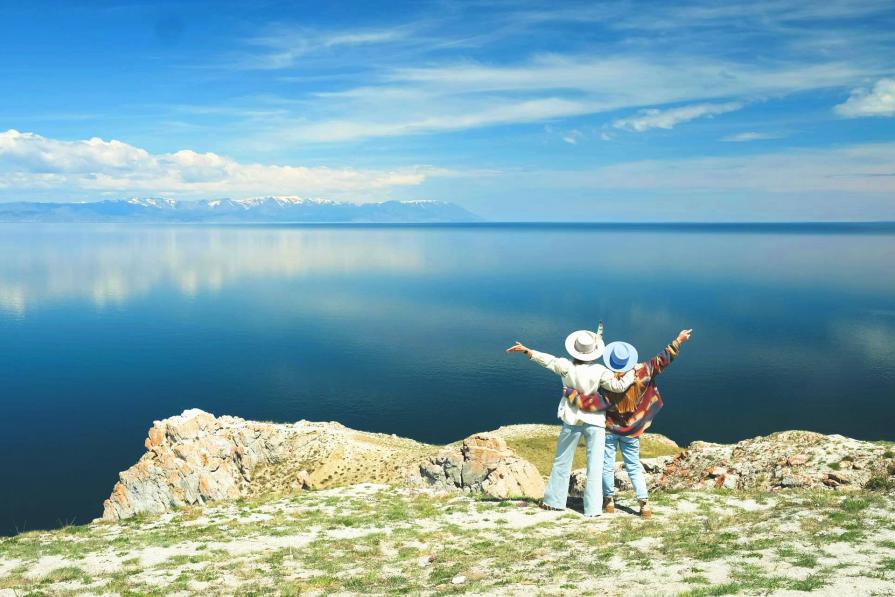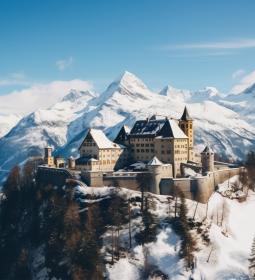There are thousands of lakes in the world on every continent. Most of these lakes are freshwater and are located at high altitudes in the Northern Hemisphere. They were formed by glaciers during the last ice age 18,000 years ago. Each lake ages over time and slowly disappears over hundreds or thousands of years. However, "thanks" to man, the process of disappearance of lakes is reduced to several decades. And in our TOP - 10 deepest lakes in the world. While the deepest ...

Clearwater Lake, Canada
- Depth: 39 m.
Located in Clearwater Lake Provincial Park in the beautiful Cooto Hills of Manitoba, northeast of Pa. Lake with an area of 33 sq. Km. surrounded by areas of northern forest and spruce bogs. It is a deep, clear and cold lake known for its large lake trout and excellent water quality. The lake is fed from a source, there are no current streams that carry silt. Streams flow from it, which flow into Lake Baklan and, finally, into the Saskatchewan River system.
Great Slave Lake, Canada

- Depth: 614 m.
It is considered the second largest lake in the Northwest Territories of Canada. Occupies an area of 27,200 sq. Km. with a volume of 1070 cubic kilometers. It includes five Great Lakes: Upper, Ontario, Michigan, Huron, Erie . It got its name during the time of the slave system.
Issyk Kul, Kyrgyzstan

- Depth: 668 m.
The second largest alpine lake in the world. The name Issyk-Kul means " hot lake " and comes from moderate salinity and thermal activity. It is the eighth deepest lake in the world and never freezes even in extreme winter conditions typical of Central Asia. The lake is fed by 118 rivers, the largest of which are Tyup and Jyrgalan.
Malawi, Malawi

- Depth: 706 m.
Formerly known as Lake Nyasa, it was first "discovered" by Dr. Livingstone, a missionary explorer, over 150 years ago. Located between Mozambique, Tanzania and Malawi, its coastlines stretch to Western Mozambique, Southern Tanzania and Eastern Malawi. This is a meromictic lake - layers of water rarely mix. It plays an important role for the fishing villages scattered around it.
O'Higgins –San Martin, Argentina

- Depth: 836 m.
Located in Patagonia between Chile and Argentina. In Argentina, the lake is called San Martin , and in Chile - O'Higgins . The aerial view of the lake shows finger-shaped flooded valleys, where 459 sq. Km. located in Argentina, and 554 sq. km. flooded valleys in the shape of fingers - in Chile.
Lake Bunyonyi, Uganda

- Depth: 900 m.
Located between two regions of Uganda - Kabale and Kisoro - in the southwest of the country. The second deepest lake in Africa and the fifth in the world is surrounded by hills ranging from 2,200 to 2,478 meters. It has about 29 islands, which are mainly concentrated in the central part. There are several settlements on the lake, but the vast majority of the local population lives in the hills near the coast.
Vostok (Lake Vostok), Antarctica
- Depth: 1000 m.
The subglacial lake is deep and mysterious. Buried under a layer of ice for more than 3.7 km, it is located near the Russian research station Vostok. The subglacial lake was covered with ice for 15 million years. During this time, it was cut off from the atmosphere and light.
This is one of the most extreme places in the world. The lake has two basins separated by a ridge.
Caspian Sea, Russia

- Depth: 1025 m.
The largest inland body of water in the world in terms of surface area, the third deepest lake in the world. The Caspian Sea is located east of the Caucasus Mountains and west of Central Asia, bordered by Kazakhstan, Turkmenistan, Iran, Azerbaijan and Russia.
The Caspian Sea is “deserted”. The reservoir has no natural outlets, but more than 130 rivers flow into it. The main tributary is the Volga River.
Lake Tanganyika, Tanzania
- Depth: 1400 m.
Situated between four African countries: Tanzania, Burundi, Zambia and the Democratic Republic of the Congo, it is the second deepest lake in East Africa, in Africa as a continent and in the world. Its waters are brackish. The lake is fed by several rivers, the largest of which are Ruzizi, Kalambo and Malagarasi. On the Kalambo River there is one of the highest waterfalls at an altitude of 215 m. The source of the lake is the Lukuga River, which flows into the Lualaba River.
Lake Baikal, Russia

- Depth: 1620 m.
Located in the Irkutsk Republic and Buryatia in Russia. The oldest freshwater lake in the world has been around for over 20 million years. This is the deepest continental body of water. More than 330 streams and rivers flow into Baikal. The largest rivers include the Barguzin, Chikoy, Upper Angara, Uda, Selenga and others. Lake Baikal is located in a deep structural basin surrounded by several mountains.











